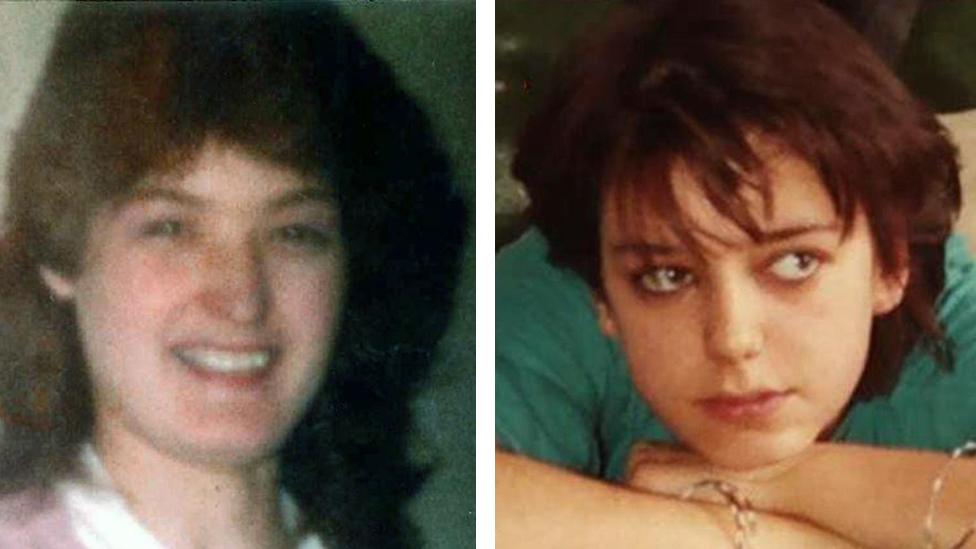The double murderer who sexually abused the dead for decades
- Published
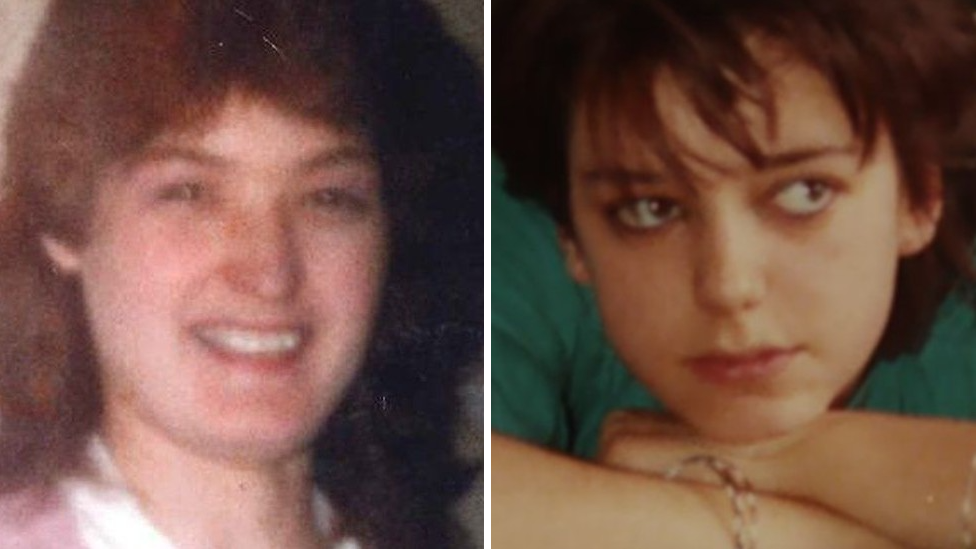
Wendy Knell and Caroline Pierce were murdered in 1987
In 1987, Wendy Knell and Caroline Pierce were in their 20s and building lives for themselves.
They did not know each other but each had a job and friends and had found bedsits in Tunbridge Wells in Kent - a lively town at the time, despite its staid reputation.
Then their paths crossed with David Fuller.
Warning: This article contains information some people will find distressing
Kent Police video footage shows the moment David Fuller was arrested
Wendy Knell, 25, had moved into a bedsit after the failure of her marriage.
Julie Monks, a friend at the time, believes the break-up came as a blow, describing Wendy as independent and hardworking, but set on having children, and making a home.
Wendy had a job at the photo shop SupaSnaps and on the night of the 22 June, her boyfriend had dropped her home.
The following day her naked body was discovered, her blood covering the bed on which she lay.
Neighbours had heard nothing through the thin walls of the bedsits, but she had been battered, sexually assaulted and strangled.
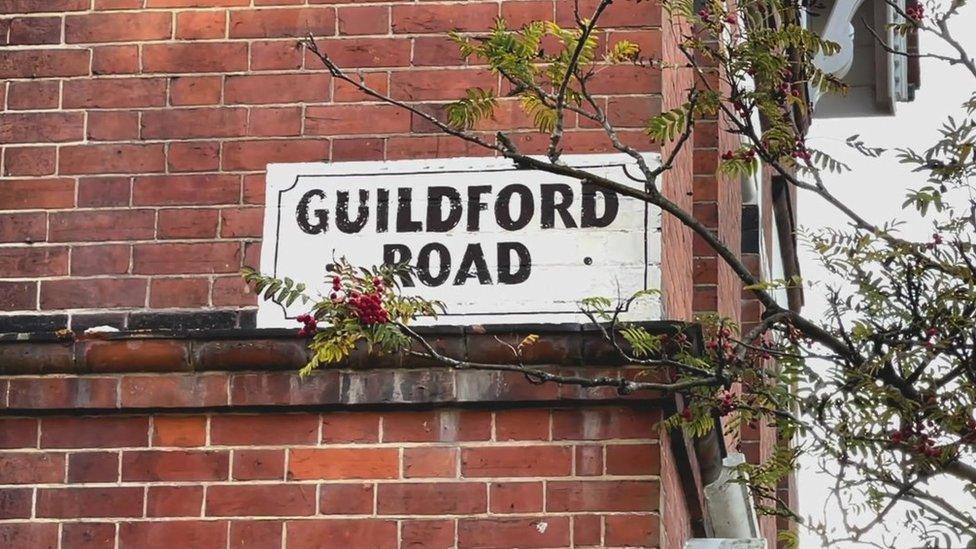
Wendy Knell was attacked in her basement bedsit in Guildford Road, Tunbridge Wells
Caroline Pierce was 20 and worked at Buster Brown's, a popular Tunbridge Wells restaurant.
On the night she disappeared there were reports of screaming from her doorstep.
It was three weeks before Caroline's body was discovered, 40 miles away, dumped, naked apart from her tights, in an overgrown drainage ditch on farmland in Romney Marsh on the south coast.
A tractor driver only spotted her by chance because of his position high up in his vehicle's cab.
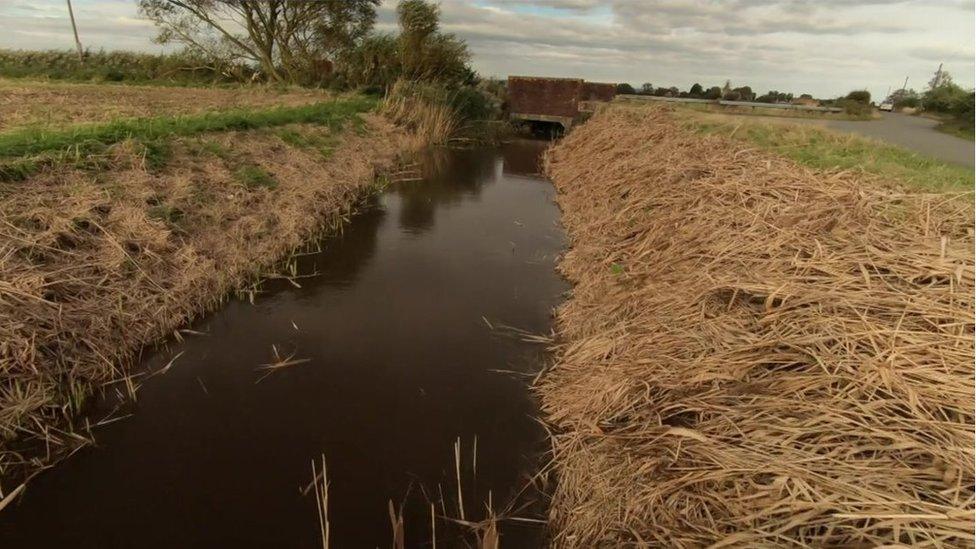
Caroline's body was found 40 miles away in a ditch
Caroline's injuries were similar to Wendy's and detectives were sure the killings, known as "the bedsit murders", were linked.
In the 1980s, there were no mobile phones to track or CCTV pictures to scan, and DNA analysis was in its infancy - with the national database of offender profiles only created eight years later.
Detectives had some forensic evidence: a bloody fingerprint on a shopping bag and a footprint on the cuff of a white blouse from Wendy's flat.
In 1999 detectives' hopes were dashed when a DNA sample failed to match anyone on the new database.
Despite two BBC Crimewatch appeals, the trail went cold.
In 2007, veteran detective Dave Stevens, who investigated the case, told the BBC: "We've scaled down the inquiry but one thing we've never done is close the inquiry."
By 2019, forensics experts had developed new techniques for collecting DNA from a damaged sperm sample like that on Caroline's tights.
To this they applied another relatively new technique, "familial DNA", which allows scientists to identify whether someone is related to a person whose DNA is discovered at a crime scene.
This "was absolutely crucial", according to former Metropolitan Police detective, Noel McHugh, who advised the Kent investigators and now works for the National Crime Agency.
Unless the killer had been arrested for some other offence, had his DNA taken, and the profile entered into the database, the DNA samples taken from the murder scenes would have remained unidentified.
"But familial DNA allowed the investigators to bring down the 6.5m profiles on the national DNA database to a workable number which would eventually identify the killer," said Mr McHugh.
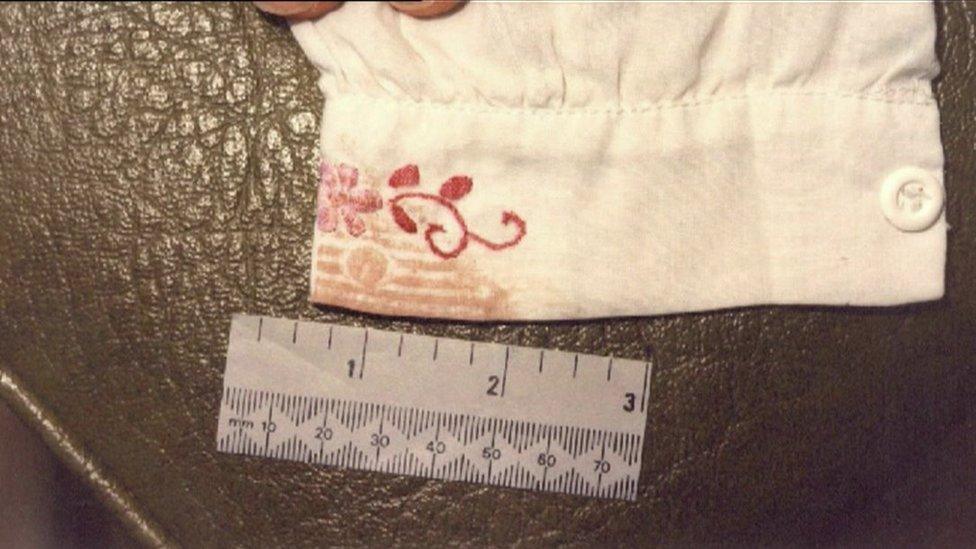
The killer had left a bloody footprint on the cuff of a white blouse in Wendy's bedsit
Officers then looked at who on the list had lived in the area of the murders and who would have been the right age.
"We came up with a long list of people, in order of which was the closest possibility of being the right relation of our offender," said senior investigating officer, Det Supt Ivan Beasley.
The closest partial DNA match was from a sibling of Fuller. Police studied their family tree and honed in on one relative.
David Fuller was born in the mid 1950s and trained as an electrician and maintenance man while working in the navy shipyards of Portsmouth.
At school he was in trouble with police for stealing bikes and damaging property in fires.
In the 1970s he committed a string of what police call "creeper burglaries".
By 2020 Fuller was living with his third wife and teenage son in Heathfield, West Sussex.
On 3 December 2020, police arrived in his quiet estate and knocked on the door of the family's small semi, noticeably well-equipped with CCTV cameras.
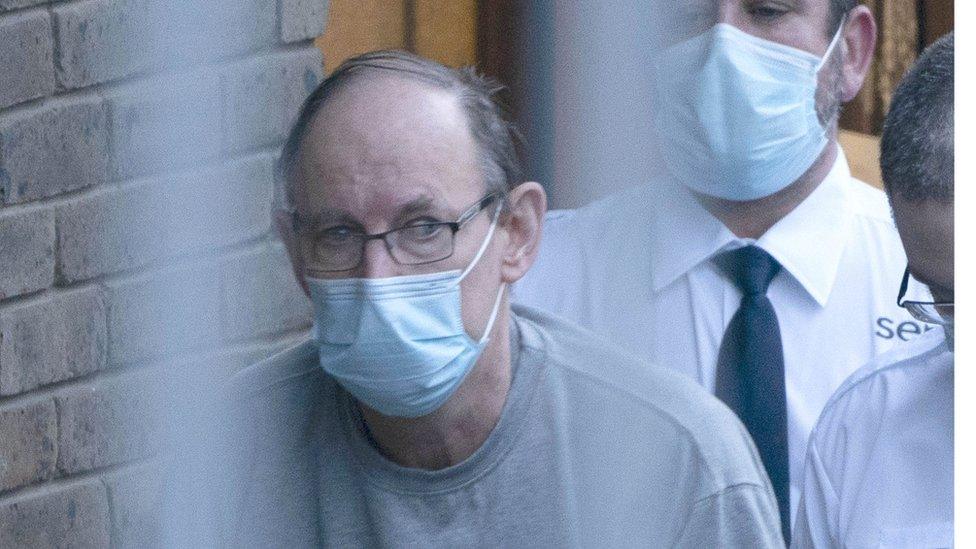
Fuller at Medway Magistrates Court in January 2021
When questioned, Fuller claimed he did not know Tunbridge Wells well, despite it being the next major town, he had not visited the SupaSnaps shop or Buster Brown's and was certainly not involved in the murders.
"That was a lie," according to Det Supt Beasley, and the detectives were about to prove it.
Fuller kept piles of old computers, hard drives, discs, phones and 34,000 printed photographs.
He had obsessively recorded his life: the invoices he had issued as a maintenance man and electrician, diaries detailing nights out at restaurants, photos showing rides with a cycling club.
Police discovered the invoices were for work around Tunbridge Wells.
The diaries showed he had regularly been to Buster Brown's.
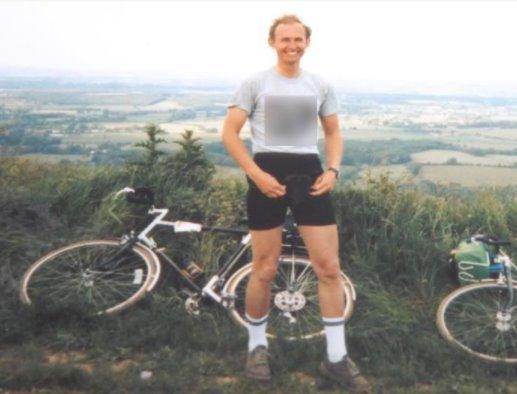
David Fuller explored the Kent countryside as a member of a cycling club
The cycling club members reached back into their memories, to describe routes they had followed, including through Romney Marsh where Caroline was discovered.
He had actually lived on the same road as Wendy in the 1970s and 80s, before she moved in.
One of the photographs showed Fuller, lying on his stomach on a sunny day in the 1980s, his feet upturned, the soles of his Clarks shoes exposed.
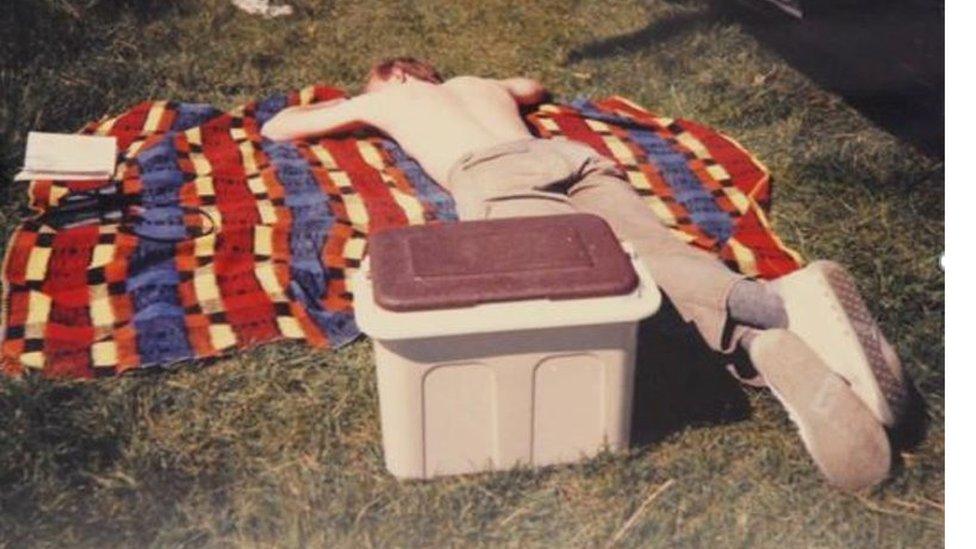
Detectives matched the pattern on the soles of the shoes worn by David Fuller in this picture, with the footprint on Wendy's blouse
The pattern matched the print found in Wendy's flat and his fingerprints partially matched the bloody print on the shopping bag.
The case became overwhelming when a DNA sample taken from Fuller matched DNA in the semen collected decades before from Caroline's tights.
The detectives had found their killer after 33 years.
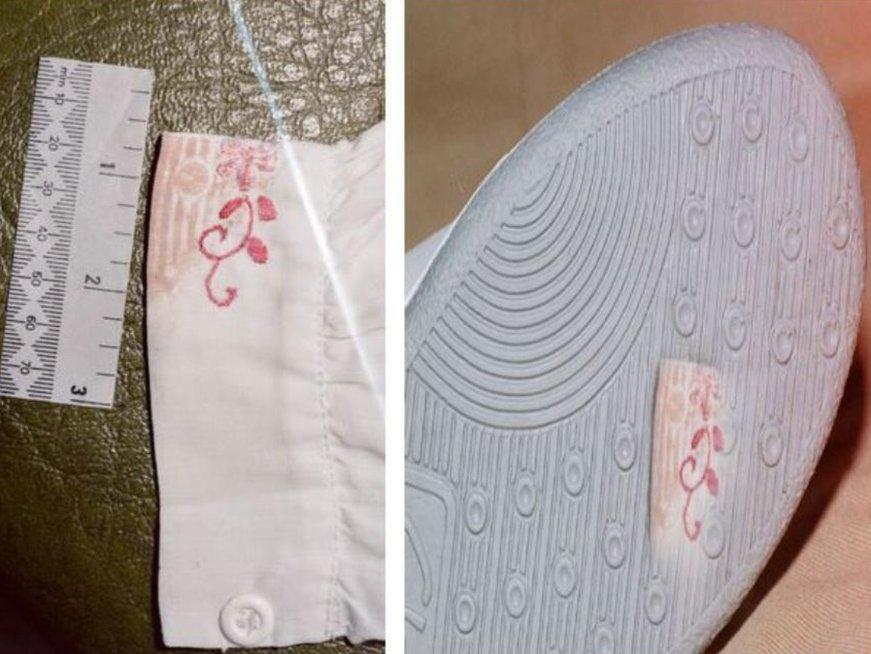
But the investigation was not over. It was about to take an even more disturbing turn.
At his house, experts were grappling with computer hardware, hoarded since the 80s, including hundreds of hard drives, memory cards and 2,200 obsolete storage discs.
He had 30 mobile phones and sim cards.
Then, they examined a cupboard, inside which a cabinet had been positioned. They pulled it away from the wall. Screwed to the back was a holder, a "concealed hide", containing four hard drives.
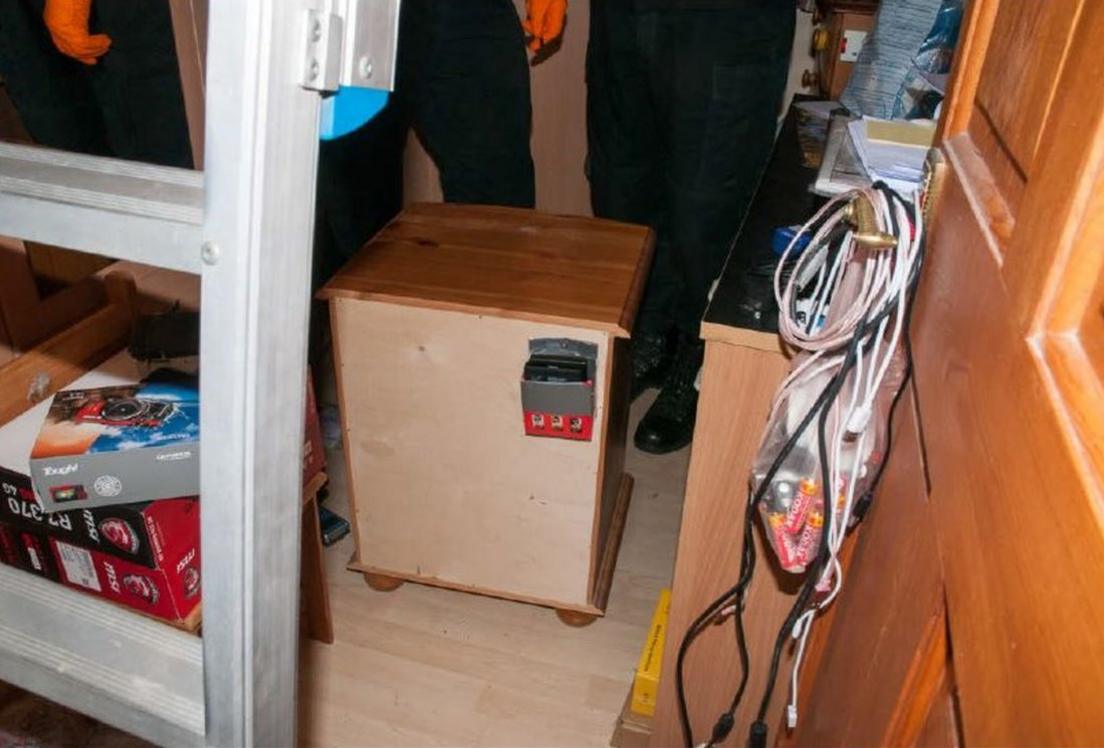
Inside a cupboard at Fuller's house, detectives found a cabinet with four hard drives hidden at the back
On them were videos, apparently filmed by Fuller inside a hospital mortuary.
When detectives started going through them, they made a sickening discovery. David Fuller had been sexually abusing the bodies of dead people.
Noel McHugh remembers well the day he opened the report detailing this latest development in the inquiry.
"I could not comprehend it. My thoughts were very much for Wendy Knell's family and Caroline Pierce's 33 years without justice.
"But now families are finding out that their loved one, when they should have been safe and afforded dignity in death, suffered at the hands of David Fuller."

From 1989, Fuller was a maintenance manager at two Kent hospitals: Kent and Sussex, now closed, and Tunbridge Wells, Pembury
At the hospitals where he worked, Fuller had an "access all areas" swipe card, and the mortuary was an area he regularly visited.
At the newer hospital, the fridges used to store the bodies of deceased patients have doors at each end.
One end is covered by CCTV cameras, but the other, where post mortem examinations take place, has none.
Fuller seems to have known this. Police found no footage from the hospital of what he was doing.
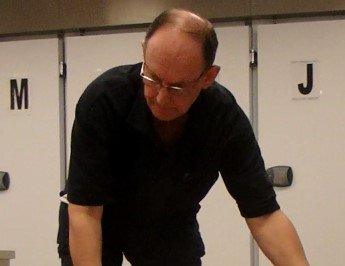
Detectives discovered videos Fuller had filmed of himself at the hospitals where he worked
But his own videos, filmed on a small camera, were damning.
Investigators were able to pause them, and read details on patients' wristbands.
They cross-referenced metadata on the videos, which showed when they had been filmed, with the names of patients in the mortuary at the time.
Fuller even kept a little black book containing his victims' names.
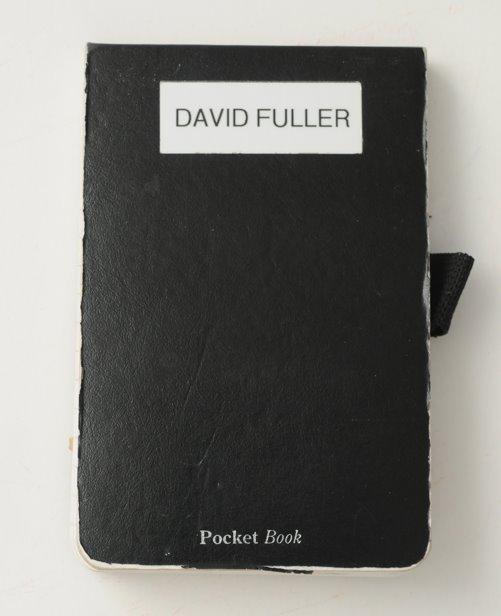
Fuller kept details of his victims in a little black book
"He wouldn't leave them alone," Senior Crown Prosecutor Libby Clark said.
"He went back to them on different occasions. This is the most disturbing and challenging case I have ever been involved with."
This is one of the worst cases of its type anywhere in the world, with police counting 100 victims whose ages range from under 18, to over 85.
Fuller also had one of the biggest stashes of child sexual abuse images ever discovered by police.
NHS sources say colleagues saw Fuller as helpful - the guy who would change a light bulb or fix a fuse with a smile.
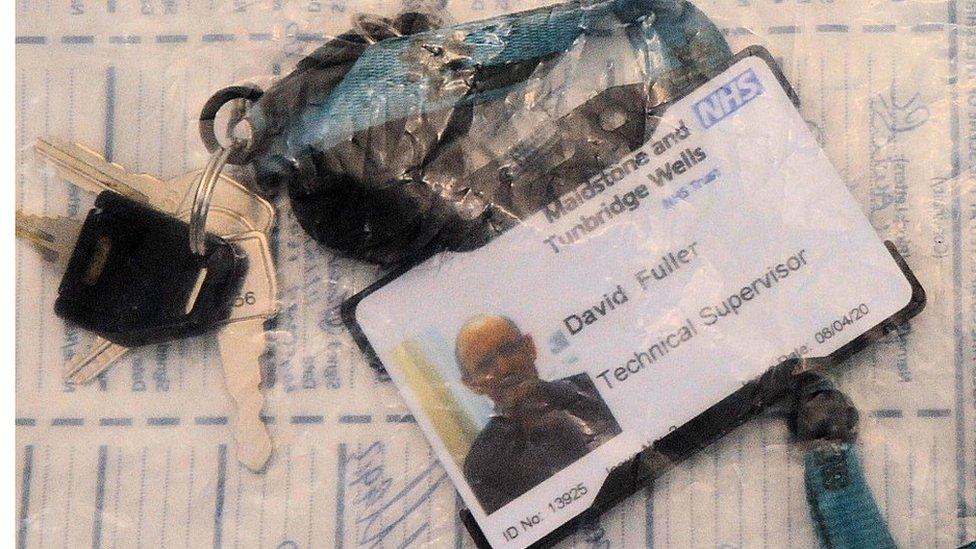
Dr Richard Badcock, a consultant forensic psychiatrist whose work for the police includes assessing Harold Shipman, believes Fuller's crimes followed a distinctive pattern.
"The psychopathology at work here is very definitely sado-masochism.
"In essence, not being able to deal with your own issues except by manipulative behaviour."
The "creeper burglaries" Fuller committed in the 1970s suggest this started with voyeurism but gradually that behaviour escalated to murder, says Dr Badcock.
"Although you are doing extreme things, you might only feel alive in the moment of the offence."
Dr Badcock sees a direct link between the "sexual homicides" of Wendy and Caroline, and the later offences in the mortuary, which he regards as psychologically more extreme than murder.
"Necrophilia, that's it. There's nowhere else to go after that."
Ironically, the related offence carries a maximum two-year sentence, compared to life for murder - sparking suggestions this case could lead to a rethink within government.
Fuller is known to have been abusing the deceased between 2008 and 2020 but there remains a glaring hole in his record, with no known offending between 1987 and 2008.
Kent Police are now examining the records of missing people. Could he have killed or abused others?
In 2007 Wendy Knell's father Bill told the BBC: "One day someone's going to ring that door and say: 'We've caught him', and there will be a celebration, by God there will be, especially if he goes down for a very, very long time."
That day has come, but sadly Bill Knell, who died in 2017, has not lived to see it.
Related topics
- Published5 November 2021
